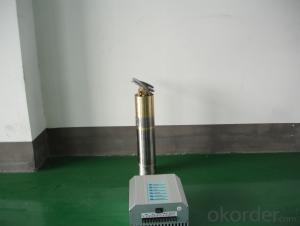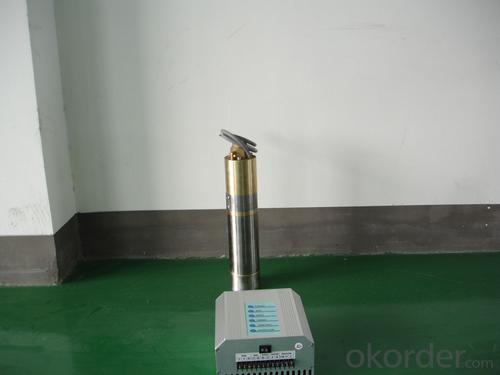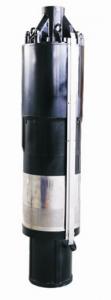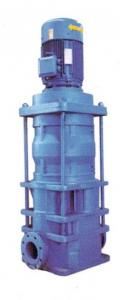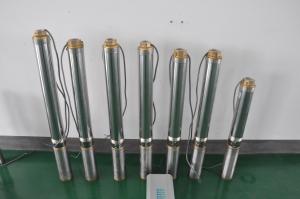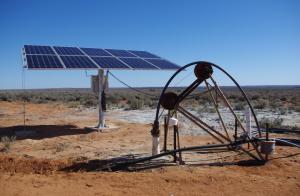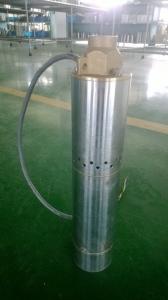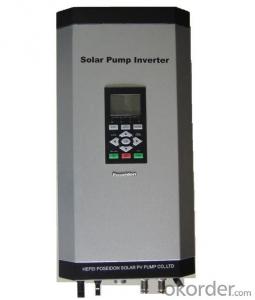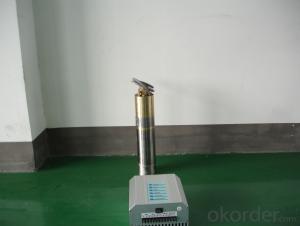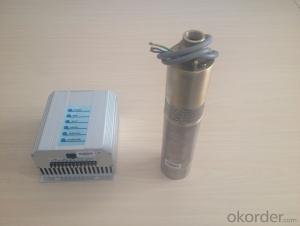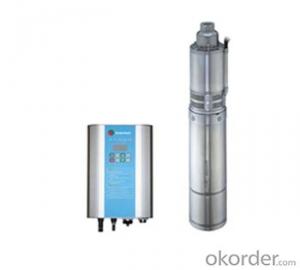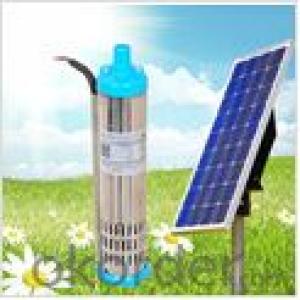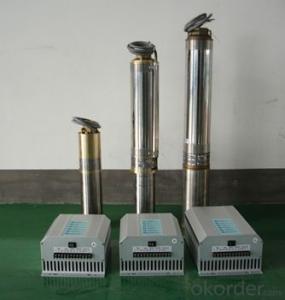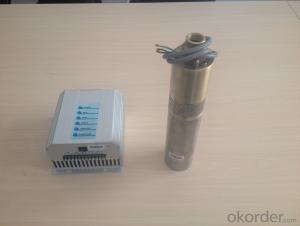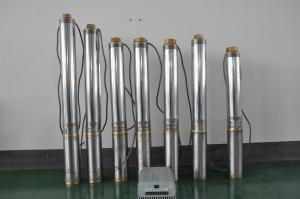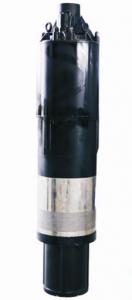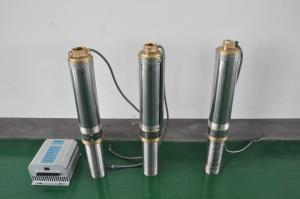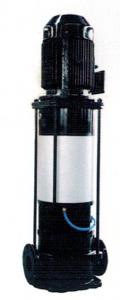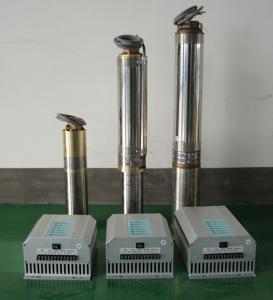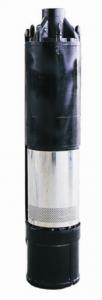Solar Pump Home Depot DC Submersible Pumps
- Loading Port:
- China Main Port
- Payment Terms:
- TT OR LC
- Min Order Qty:
- -
- Supply Capability:
- -
OKorder Service Pledge
OKorder Financial Service
You Might Also Like
Item Description :
This superb new addition to our solar fountain range comes with a 10w solar panel,and a powerful fountain pump that is capable of producing fountains of up to 2m in height. As well as being easy to set up and use.Instruction manual is supplied for assembly and maintenance.
Solar Fountain Key Features :
Powered by direct sunlight
No high voltage electric mains required
Safe for children
Max. height of fountain: 2M
Max. flow capacity: 800 L/H(176 GAL)
10W Polycrystalline solar panel included
18V DC brushless pump
Solar Pump Features :
Can produce fountains up to : 2M (tube height) 1.4M (fountain height)
Comes with multiple nozzle accessories
Cable Length : 5M
Solar Panel Features :
10W peak power.
Polycrystalline highly efficient solar panel
Comes mounted in aluminium frame
Comes with ground stake and rotating knob so you can angle your panel toward the sun
What You Will Get :
10W solar panel
Solar pump
Ground Sake
Nozzle accessories
Precautions :
DO NOT alter or change the product itself or its components
Operate pump in freshwater only, never above 50 degrees celsius
Keep away from flammable liquids
Do not connect to any other power supply other than the included
- Q: How does the size of the water storage tank affect the performance of a solar pump system?
- The size of the water storage tank directly affects the performance of a solar pump system. A larger tank allows for more water storage, which in turn allows the pump to operate for longer periods of time without sunlight. This is especially important during cloudy or rainy days when solar power generation is reduced. A larger tank also helps to maintain a consistent water supply and pressure, ensuring optimal performance of the pump system.
- Q: Are there any limitations on the flow rate of a solar pump?
- Yes, there are limitations on the flow rate of a solar pump. The flow rate of a solar pump depends on factors such as the capacity of the pump, the power generated by the solar panels, and the intensity of sunlight available. These factors can impact the pump's ability to deliver water at higher flow rates. Additionally, the design and efficiency of the pump itself may impose limits on the maximum flow rate it can achieve.
- Q: Are there any limitations to the type of water source that can be used with a solar pump?
- Yes, there are some limitations to the type of water source that can be used with a solar pump. Solar pumps are typically designed to work with clean water sources such as wells, boreholes, or rivers. They may face challenges in pumping water from sources that have high levels of sediment, debris, or contaminants. Additionally, the efficiency of a solar pump may be affected if the water source has low or inconsistent water levels, as it relies on sunlight to generate power.
- Q: What is the expected lifespan of the batteries used in a solar pump system?
- The expected lifespan of the batteries used in a solar pump system can vary depending on several factors. Generally, the lifespan of these batteries can range from 5 to 15 years. However, it is important to note that the actual lifespan can be influenced by factors such as the quality of the batteries, the charging and discharging cycles, the depth of discharge, and the maintenance practices. Higher quality batteries, such as deep-cycle or lithium-ion batteries, tend to have a longer lifespan compared to lower quality batteries. Additionally, the frequency and depth of discharge can impact the lifespan. It is recommended to avoid frequent deep discharges as they can reduce the overall lifespan of the batteries. Proper maintenance practices, such as regular cleaning, ensuring appropriate charging levels, and avoiding extreme temperatures, can also contribute to extending the lifespan of the batteries. It is advisable to follow the manufacturer's guidelines and recommendations for optimal battery performance and longevity. Ultimately, the expected lifespan of the batteries in a solar pump system can be influenced by various factors, but with proper care and maintenance, they can typically last between 5 to 15 years.
- Q: Can solar pumps be installed by homeowners, or is professional installation necessary?
- Solar pumps can typically be installed by homeowners without professional assistance. They are designed to be user-friendly and come with detailed installation instructions. However, it is crucial for homeowners to have a basic understanding of the installation process and have some plumbing and electrical skills. If homeowners feel uncomfortable or lack the necessary knowledge, it is recommended to hire a professional to ensure a proper and safe installation.
- Q: Are there any government incentives for using solar pumps?
- Government incentives are available for the utilization of solar pumps. Many governments worldwide acknowledge the significance of renewable energy, particularly solar power, and thereby offer diverse incentives to stimulate its adoption. These incentives comprise financial rewards, tax credits, grants, and subsidies that offset the initial expenses associated with the installation and usage of solar pumps. In the United States, for instance, the federal government provides a 26% Investment Tax Credit (ITC) for solar energy systems, including solar pumps. This enables individuals and businesses to deduct 26% of the installation costs from their federal taxes. Moreover, certain states offer supplementary incentives such as rebates or performance-based rewards to further encourage the utilization of solar pumps. Similar incentives are also available in other countries. Germany, Australia, and India, for instance, implement feed-in tariffs which guarantee a fixed payment for the electricity generated by solar pumps. This financial incentive motivates individuals and businesses to invest in solar pumps and sell any surplus energy back to the grid. Additionally, specific incentives may be provided by particular regions or local governments to promote the adoption of solar pumps. These incentives can include grants or subsidies specifically tailored for farmers or rural communities, facilitating their transition from conventional diesel or electric pumps to solar-powered alternatives. These government incentives serve to not only alleviate the upfront costs associated with solar pump installation but also to foster sustainable and clean energy solutions. By promoting the adoption of solar pumps, governments aspire to reduce reliance on traditional energy sources, diminish greenhouse gas emissions, and contribute to the overall transition towards a more sustainable future.
- Q: How does a solar pump handle water with high levels of salt?
- A solar pump can handle water with high levels of salt by utilizing a reverse osmosis (RO) system. Through this process, the pump pushes the saltwater through a membrane that filters out the salt particles, allowing clean water to pass through. This ensures that the pump is able to effectively handle water with high levels of salt and provide usable, fresh water for various applications.
- Q: What is the typical maintenance cost for a solar pump system?
- The maintenance cost of a solar pump system can differ based on several factors, including the system's size and type, location, and specific components used. However, in general, the maintenance cost of a solar pump system is relatively low in comparison to traditional pump systems. Typically, the primary maintenance activities for a solar pump system involve cleaning the solar panels, inspecting and maintaining the pump and motor, checking and replacing any worn or damaged parts (such as filters or seals), and ensuring the control system's proper functioning. The cost of these maintenance activities can vary from a few hundred to several thousand dollars annually, depending on the system's complexity and scale. It is also advisable to have regular professional inspections and servicing to ensure optimal performance and longevity, which may result in additional costs. It is worth noting that while the upfront installation cost of a solar pump system may be higher than that of a conventional pump system, the long-term savings in operation and maintenance can outweigh the initial investment. Furthermore, the utilization of renewable energy sources like solar power eliminates the need for fuel or electricity, resulting in significant cost savings over time.
- Q: Can a solar pump be used in areas with harsh weather conditions?
- Yes, solar pumps can be used in areas with harsh weather conditions. They are designed to withstand extreme temperatures, heavy rainfall, and even snow. They are built with durable materials and often have weatherproof enclosures to protect the pump and its components. Additionally, solar pumps are highly reliable and can continue to operate efficiently in challenging weather conditions, providing a sustainable and efficient water pumping solution.
- Q: How does a solar pump handle power fluctuations or surges?
- A solar pump typically handles power fluctuations or surges by having built-in protection mechanisms. These mechanisms can include voltage regulators, surge protectors, and inverters that convert DC power from the solar panels into stable AC power for the pump. This helps ensure that the pump receives a consistent and reliable power supply, even when there are fluctuations or surges in the solar power output.
Send your message to us
Solar Pump Home Depot DC Submersible Pumps
- Loading Port:
- China Main Port
- Payment Terms:
- TT OR LC
- Min Order Qty:
- -
- Supply Capability:
- -
OKorder Service Pledge
OKorder Financial Service
Similar products
Hot products
Hot Searches
Related keywords
